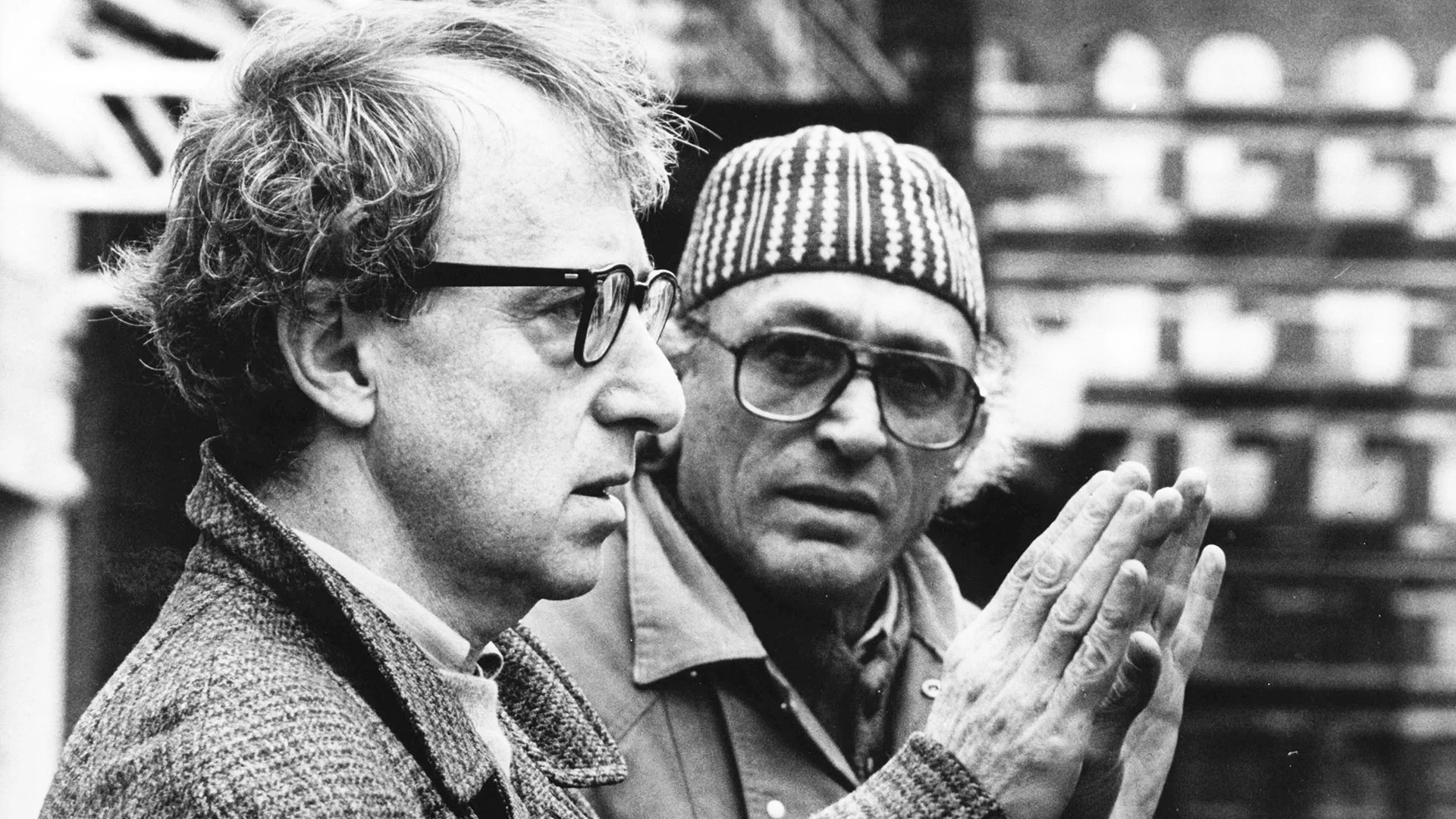Water and Sugar: Carlo Di Palma, the Colours of Life
The story of one man's important role in film history, both in Italy and in America.
Woody Allen with Carlo Di Palma
Carlo Di Palma was born in 1925 and that was the ideal time. He came from a humble background but his father repaired and operated cameras and his mother, a flower seller at Rome's Spanish Steps, encouraged him to take an interest in culture. In the circumstances he was a focus operator at the age of fifteen from which minor position he would soon go on to become an assistant cameraman and then develop into being one of Italian cinema's greatest photographers. It was his good fortune to be starting out just when neo-realism was establishing itself as a key movement in his country's cinema. The observant youth could thus watch at close quarters the working methods of such directors as Visconti, Rossellini and De Sica while immediately becoming impressed by the innovative camera work of Aldo Tonti on Ossessione (1942). But it's another outstanding Italian photographer, Gianni Di Venanzo, who is described by Di Palma as his greatest teacher (there is, happily, plenty of historical footage showing Di Palma himself that has been resurrected here).
Although Di Palma died in Rome in 2004, his widow, Adriana Chiesa Di Palma is the guiding light of this documentary and indeed its producer, the director being Fariborz Kamkari. It looks back on Di Palma's career with comments from two actors, Alec Baldwin and Michele Placido, and from a whole range of others especially directors who include Wim Wenders, Ken Loach and, by no means least, Woody Allen. Di Palma was based in Italy until the 1980s when, on a second attempt to recruit his services, Allen brought him over to New York for Hannah and his Sisters. He would stay for seventeen years.
As one would hope, this is a fine film about a great photographer but it also offers much more than one would suppose. Aided by film clips of the highest quality, it gives a wonderful overview of Italian cinema between 1942 and 1982 followed by detailed comments from Woody Allen that illustrate vividly why Allen used him to photograph no less than twelve of his films. Be it in his earlier black and white work or in his exceptional ability to use colour meaningfully, Di Palma was an artist, a true collaborator with major directors and most especially with Antonioni as the latter's second wife, Enrica, confirms. And, if the beauty of Di Palma's images stands out, stress is also laid on his social concerns and his delight in the human face.
Kamkari's film may end neatly with an explanation of its unusual title but it is not quite a perfect film. That it concentrates on the work more than on Di Palma's life is no problem, but it is odd that no reference is made to his death and, having ploughed ahead in chronological order tellingly and at a good pace, the film loses shape and meanders in its last ten minutes or so. Never mind. It is immensely informative without ever becoming too technical and we learn unexpected details (Di Palma's brief career as a director of films starring Monica Vitti, for example, and an intriguing anecdote involving another notable photographer, Sven Nykvist). Altogether this is a highly commendable work as welcome for its view of cinema history as for its survey of the work of Di Palma, although it is fair to say that these two things were often one and the same.
MANSEL STIMPSON
Featuring Woody Allen, Bernardo Bertolucci, Adriana Chiesa Di Palma, Wim Wenders, Michele Placido, Alec Baldwin, Ken Loach, Christian De Sica, Ettore Scola, Francesco Rosi, Nikita Mikhalkov, Lina Wertmüller, Enrica Antonioni, Volker Schlöndorff, Abel Ferrara, Mira Nair, Michael Ballhaus.
Dir Fariborz Kamkari, Pro Adriana Chiesa Di Palma, Ph Giuseppe Mottola, Ed Luigi Capalbo and Fabio Nunziato.
CineFinance Italia/Falkun Films-Swipe Films.
90 mins. Italy. 2016. Rel: 21 July 2017. No Cert.


